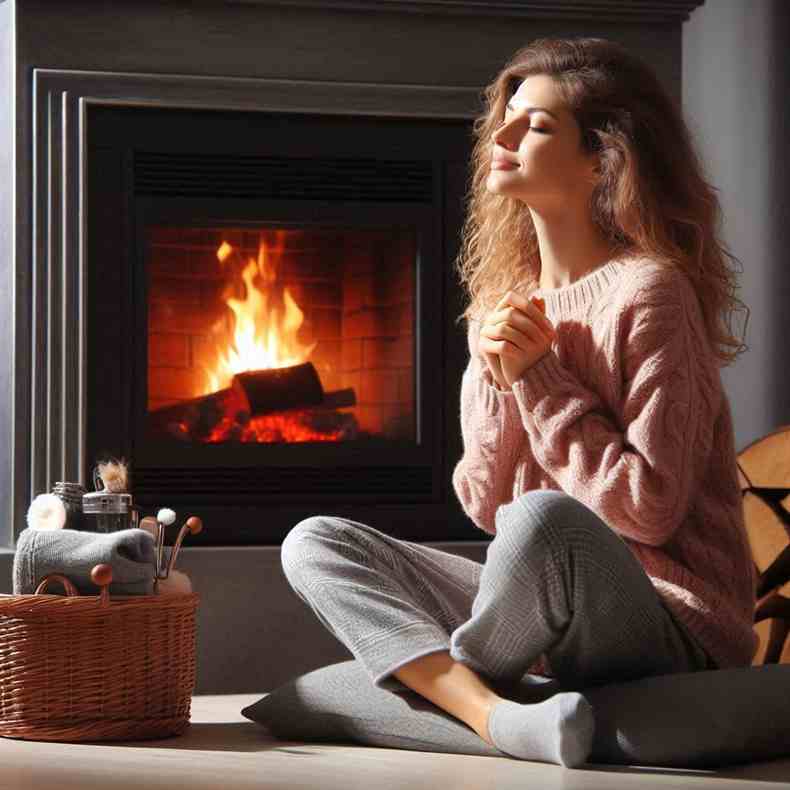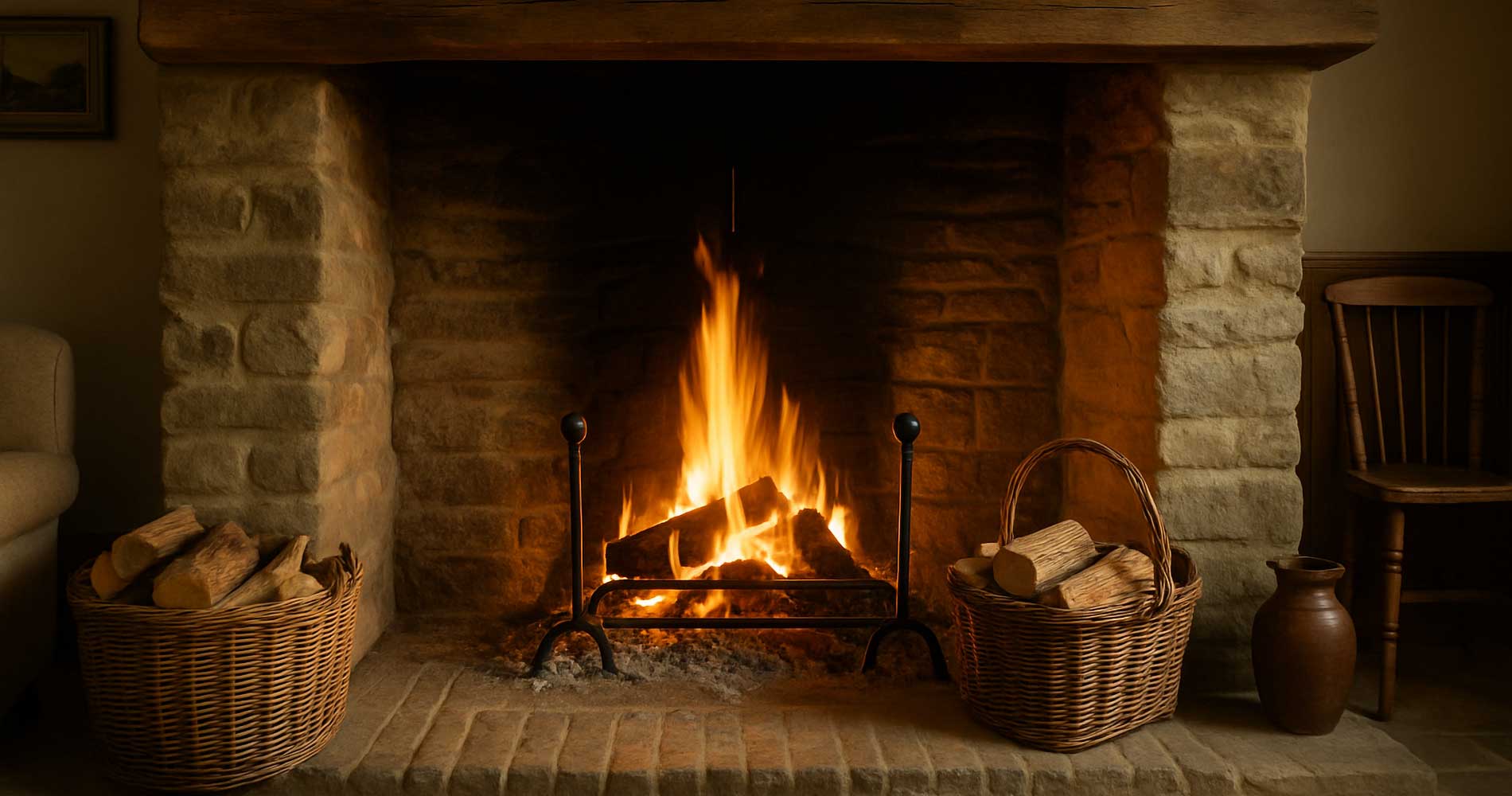It All Started with a Fire in the Dirt
Long before underfloor heating or flick-of-the-switch flames, fire meant survival. The earliest fireplaces weren’t fireplaces at all—they were open flames, dug into the ground, surrounded by stones and stories. No chimney. No design. Just raw, elemental warmth.
And yet, even then, these early hearths did more than cook food. They pulled people together, gave light in the dark, and set the stage for one of the most enduring features in human homes.
The Ancient Hearth: More Than Just Heat
In Neolithic times, central hearths were essential. Often found smack in the middle of the home—smoke and all—they were used for everything from cooking and warmth to ceremonies and rituals.
- Central placement: Early hearths had pride of place. You couldn’t miss them, partly because of the smoke.
- No chimney yet: Just a hole in the roof or an open door for ventilation. Not ideal, but it worked... sort of.
- Symbolic role: Fire was seen as sacred. In many cultures, the hearth was spiritually significant—a space to honour ancestors or deities.
These primitive hearths were the earliest versions of something we’d come to treasure centuries later: the fireplace as a living, breathing heart of the home.
Medieval Times: Smoke, Stone, and Big Open Fires
Fast-forward to medieval Europe and things had evolved—just a little. Massive stone hearths dominated the great halls of castles and manors. But again, no proper chimneys. Just open fires and high ceilings, hoping the smoke would drift up and out.
- The central hearth: Still open, often raised, and used for heating giant rooms filled with stone and drafty windows.
- Basic cooking: Stews, bread, and simple fare were prepared right there over the flames.
- Gathering spot: Everything happened around the fire—from storytelling to strategy meetings.
Cosy? Not quite. But communal? Absolutely. The fireplace was as much a social hub as it was a heat source.
The Chimney Revolution
Around the 12th to 13th centuries, someone clever in France (bless them) had the bright idea to add a flue and chimney. Finally, smoke could escape properly—without coating everything in soot. This simple invention changed everything.
- It allowed fireplaces to move from the middle of the room to the wall.
- Homes became warmer, cleaner, and more private—no more communal great halls.
- Cooking and heating could now be separated—hello, dedicated kitchens!
Chimneys were a total game-changer. Suddenly, fireplaces could be designed not just for function—but for form.

Renaissance to Georgian: Enter the Age of Elegance
By the Renaissance, fireplaces were becoming fancier. Think ornate carvings, grand mantels, and design that reflected social status. In the Georgian period (18th century), symmetry and style took centre stage.
- Marble surrounds: Elegant, cool, and increasingly fashionable in wealthier homes.
- Cast iron inserts: More efficient at radiating heat—and quite handsome, too.
- The mantelpiece: Became a proper decorative feature. Not just a ledge, but a frame for the fire itself.
Fireplaces now reflected the household—refined, restrained, and oh-so-geometrically perfect. A far cry from the smoky pits of old.
The Victorian Era: Peak Hearthdom
If there was ever a golden age of fireplaces, the Victorian period was it. Just about every room had one—even the bedrooms. Fireplaces were central to home life, and Victorian designs ranged from ornate and elaborate to downright gothic.
- Tiles, carvings, and cast iron grates dominated the style scene
- Fires were no longer just functional—they were fashionable
- Coal became the dominant fuel, hotter and more consistent than wood
You can still find many original Victorian fireplaces in period homes today—often hidden under decades of paint, waiting to be rediscovered and loved again.
The 20th Century: Modernism and Minimalism
Then came the 20th century. Central heating arrived. Radiators snuck into walls. The humble fireplace? No longer essential—but still beloved.
- Art Deco fireplaces: Sleek lines, polished metals, bold colours—yes, fireplaces could be glamorous too.
- Mid-century styles: Brick surrounds, lower profiles, and even corner fireplaces entered the mainstream.
- The 60s and 70s: Sadly, a lot of fireplaces were ripped out in favour of modern tech and open-plan living. Mistakes were made.
Still, the fireplace persisted. Even as its function faded, its presence endured. It remained a symbol of comfort, even when it wasn't strictly needed.
Today’s Fireplaces: A Blend of Past and Future
Now, we’re in a fireplace renaissance of sorts. Not because we have to have them—but because we want to.
- Electric and bioethanol fireplaces: Perfect for smaller homes and city flats. Clean, stylish, and easy to use.
- Restorations: Many homeowners are lovingly uncovering and restoring original fireplaces that had been bricked over for decades.
- Smart fireplaces: Yes, you can now control your flames with an app. Because of course you can.
Whether minimalist or traditional, fireplaces today are all about atmosphere. We light them for ambience, for nostalgia—for the way they make us feel.
What Can You Learn from All This?
If there’s one thing that ties every fireplace across history together, it’s this: they’ve always been about more than just heat.
A fireplace says something. It says “gather here.” It says “this is where life happens.” Whether it's ancient or modern, carved in marble or set into tile, it’s a symbol of home and heart.
Final Thoughts: The Fire Still Burns
From smoke-filled huts to marble masterpieces, the fireplace has evolved with us—adapting, shrinking, growing, reinventing itself. But some things haven’t changed. Fire still draws us in. Still warms us. Still brings us together.
So if you're lucky enough to have a fireplace of your own, take a moment to appreciate the long line of flickering flames that came before it. You’re part of that story now.
And who knows? In a hundred years, someone might be admiring yours—wondering how people in the 2020s ever managed with electric logs and remote-controlled flames.
